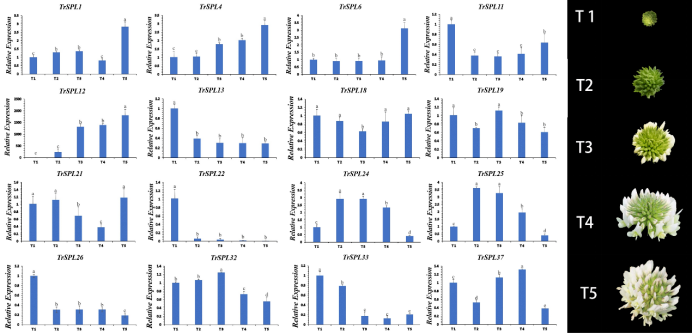Genome-Wide Identification, Characterization, and Expression Profiling Analysis of SPL Gene Family during the Inflorescence Development in Trifolium repens
2022年10月04日 19:36
DOI:10.3390/genes13050900.
发表期刊:Genes (Basel)
链接:https://pubmed.ncbi.nlm.nih.gov/35627286/
作者:Jieyu Ma#, Gang Nie#, Zhongfu Yang, Sainan Ma, Jinwan Fan, Ruchang Hu, Feifei Wu, and Xinquan Zhang*.
Abstract:Trifolium repensis the most widely cultivated perennial legume forage in temperate region around the world. It has rich nutritional value and good palatability, seasonal complementarity with grasses, and can improve the feed intake and digestibility of livestock. However, flowering time and inflorescence development directly affects the quality and yield ofT. repens, as well as seed production. TheSqua promoter binding protein-like (SPL)gene family is a plant specific transcription factor family, which has been proved to play a critical role in regulating plant formation time and development of flowers. In this study, a total of 37TrSPLgenes were identified from the whole genome ofT. repensand were divided into nine clades based on phylogenetic tree. SeventeenTrSPLgenes have potential target sites for miR156. The conserved motif of squamosa promoter binding protein (SBP) contains two zinc finger structures and one NLS structure. Gene structure analysis showed that allTrSPLgenes contained SBP domain, while ankyrin repeat region was just distributed in part of genes. 37TrSPLgenes were relatively dispersedly distributed on 16 chromosomes, and 5 pairs of segmental repeat genes were found, which indicated that segmental duplication was the main way of gene expansion. Furthermore, the gene expression profiling showed thatTrSPL11,TrSPL13,TrSPL22, andTrSPL26were highly expressed only in the early stage of inflorescence development, whileTrSPL1andTrSPL6are highly expressed only in the mature inflorescence. Significantly, the expression ofTrSPL4andTrSPL12increased gradually with the development of inflorescences. The results of this study will provide valuable clues for candidate gene selection and elucidating the molecular mechanism ofT. repensflowering regulation.

Expression profiles of 16 selected TrSPL genes at 5 different flower development stages in T. repens. T1, Immature inflorescence; T2, Inflorescences in which no floret was open; T3, Inflorescences in which outermost circle of florets were open; T4, Inflorescences in which 50% of florets were open; and T5, Mature inflorescence. The vertical bar is the standard deviation. The letters indicate differences.